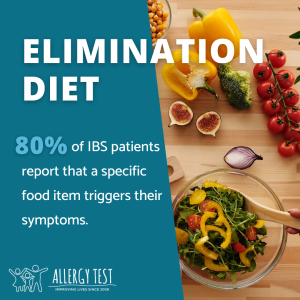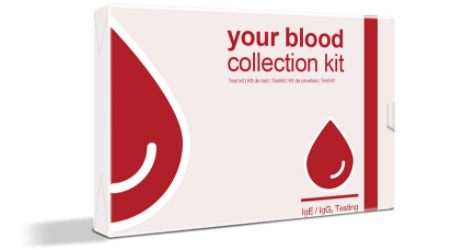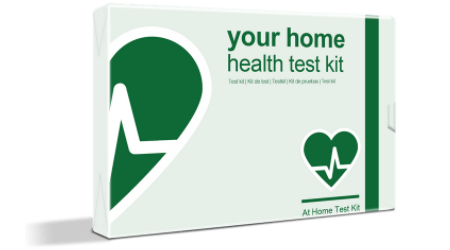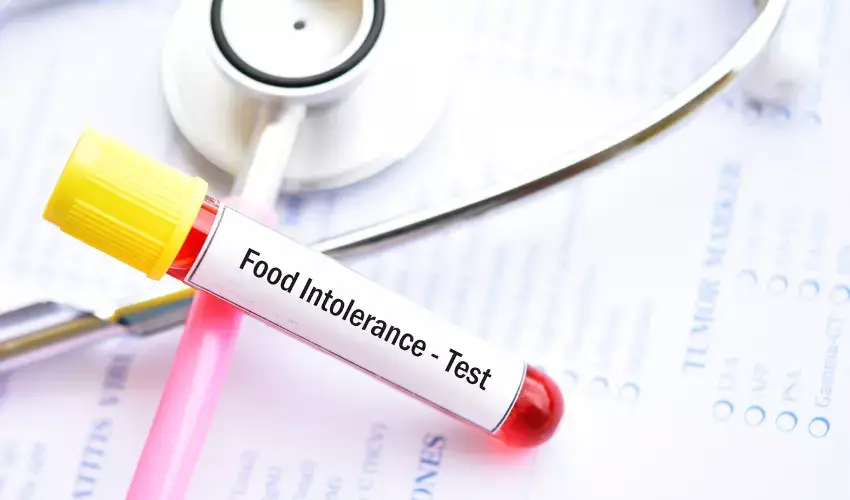Food intolerance and food allergies are two separate issues misconstrued as the same. However, that is not so.
Food intolerance is an adverse reaction involving the digestive system that can result in symptoms like irritable bowel syndrome (IBS), rashes, hives (urticaria), stomach pain, bloating, diarrhea, recurrent mouth ulcers, or headaches but doesn’t cause anaphylaxis. On the other hand, food allergies trigger an immune response that can be IgE mediated/Non-IgE mediated or cell-mediated.
Food Intolerance is challenging to test, and there is some argument surrounding intolerance testing and elimination diets. While many condemn intolerance testing, saying that a simple elimination diet is sufficient, others swear by Food Intolerance Testing and its efficacy in dealing with food intolerances. At Allergy Test, we take a different approach.
Is it too much to ask for both?
Intolerance testing and elimination diets should go hand-in-hand. Both should be used as tools for achieving a healthier, symptom-free life.
What is an Elimination Diet?
Elimination diets are a great potential diagnostic tool used when the diet is the main contributing factor to your symptoms. An elimination diet is a way of omitting various foods or groups of foods to alleviate existing food intolerance or allergy symptoms believed to cause an adverse food reaction.
An elimination diet is a gold standard for identifying food intolerance. After the elimination initiation, you gradually introduce foods back into your diet one at a time. Any subsequent signs of discomfort may help you identify which food you are allergic to.
Elimination diets are used when people suspect that they have a reaction but haven’t been able to identify the root cause of their symptoms. They’re also commonly used following a food intolerance test or allergy test to confirm the exact item.
An elimination diet should last for at least 4 weeks to allow time for all eliminated foods to be completely flushed out of your system. After the initial 4-week elimination period, you can begin to reintroduce those foods, one at a time, to determine which foods was the root cause of your symptoms.
It is not uncommon for the elimination period to be enough for a reaction to dissipate entirely. However, this is not always the case, and you should be cautious when reintroducing items – especially those you suspect you might be allergic to.
An elimination diet is ideal for anyone regularly experiencing digestive symptoms such as bloating, constipation, abdominal cramping, or gas. It may also be helpful if you suffer from brain fog, regular headaches, or constant fatigue. These are all common food intolerance or allergy symptoms and may be alleviated through an elimination diet.

Research indicates that an elimination diet guided by an IgG (intolerance) or IgE (allergy) test can help with symptoms of other conditions, such as ulcerative colitis and IBS. This is promising, as approximately 80% of IBS patients report that a specific food item triggers their symptoms.
A 2013 study found that an elimination diet based on the results of an intolerance test may significantly reduce symptoms in IBS patients who also experienced migraine {1}. This positively impacted their quality of life.
A different 2018 study also looked into the effects of intolerance test-guided elimination diets in patients with Ulcerative Colitis. The study had an intervention group (who commenced the elimination diet) and a control group (who did not alter their diet).
Reported symptoms lowered significantly within the intervention group compared to the control. With this, they concluded that the elimination diet had helped to reduce the severity of the patient’s symptoms².
As more research is conducted, it’s becoming apparent that food intolerances play a part in various health conditions. Avoiding certain foods could be all it takes for many of us to live without these uncomfortable symptoms.
Elimination Diets Must Follow Intolerance Testing
Intolerance testing alone tells you which foods your blood has responded to. This doesn’t necessarily mean all those foods are your symptoms’ root cause. Thus, you must commence an elimination diet to benefit from food intolerance testing.
How to Do an Elimination Diet
These foods/food groups aren’t removed forever, but you must remove them for enough time to allow your body to respond. Elimination diets require patience and time to show results. Our recommendation is the following few steps to make a start on your dieting.
Maintain a Food Diary
‘What gets measured, gets managed.’ So, it’s paramount that you keep track of the foods you eat during both the elimination period and the reintroduction stage. This will be invaluable in determining which foods cause symptoms and to what degree. It’s particularly important when reintroducing items back into your diet.
Begin Symptom Monitoring
Ideally, your food diary will also have a ‘symptoms’ section to monitor how each food item affects your body. This will help you spot any patterns in symptoms or lack thereof. It will also keep you motivated in moments of weakness when old craving strikes or you’re offered something containing one of your known problem foods.
It’s helpful to give your symptoms a severity level to monitor your progress and determine which foods you may want to continue avoiding indefinitely. Just list the symptoms you notice, note the severity, and list the foods you recently consumed which may be the cause.
Start Replacing Nutrients
Before beginning an elimination diet, it’s recommended that you consider the foods that you’ll be avoiding and the nutrients that these foods are rich in. You should make you aren’t removing any single primary source of nutrients without planning a replacement.
For example, if you’re eliminating fish, it’s important to ensure you still get plenty of omega 3, 6 & 9 fatty acids. While most experts would recommend that you get all of your vitamins and minerals from food sources rather than supplements, there are times when supplementation may be necessary.
Explore Intolerance Testing and Allergy Testing
We recommend that your elimination diet is guided by the results from an IgG intolerance test and/or IgE allergy test rather than your gut instincts. Using appropriate test results to inform your elimination diet means you won’t needlessly restrict your diet (and, as a result, risk vitamin deficiency). It’s also a much more efficient path to becoming symptom-free.
Our Tips Around Completing an Elimination Diet Successfully
Beyond the steps we’ve outlined, consider these tips to maximize the effectiveness of your diet.
Go Cold Turkey with Potentially Problematic Foods
You should start your elimination diet by removing all of those foods highlighted in your test results from your diet. Don’t try removing one item at a time, as that’s what the reintroduction stage afterward is for. This is the most effective way to conduct the diet and will help you become symptom-free much sooner than eliminating the foods one at a time.
Reintroduce Food Strategically
After the 4-week elimination period, you can reintroduce those foods you removed. Remember that intolerance symptoms can appear anywhere from a few hours to two days after consuming a problem food. We recommend reintroducing one item at a time every couple of days. This is when monitoring your food intake and symptoms are most important. Be sure to track your meals and note any symptoms you experience.
Start with Small Amounts of Each Food Item, Instead of Going All-in Right Away.
Food intolerances are a digestive issue, so the more you eat the food you are intolerant to, the worse your symptoms can be. If you removed almonds from your diet, for example, have a handful of them at most – preferably less – and see how your body responds to them.
This is where you can pinpoint the foods that have caused the most issues for you and learn what your body can and can’t deal with. You may discover that your body can tolerate certain foods only in small quantities, which can help you avoid symptoms in the future.
As covered before, following a food intolerance test is the most effective way to conduct an elimination diet. It’ll help you save time and alleviate your intolerance symptoms quickly.

Can I Do an Elimination Diet Without the Intolerance Test?
A lone elimination diet leaves you constantly guessing which foods are causing your symptoms and needlessly lengthens the whole process. It makes you suffer intolerance symptoms longer than necessary while adding foods to the ‘avoid’ list, hoping to find relief. Because of all this guesswork, the reintroduction period is much longer than it would have been had you followed the guidance of an intolerance test.
Food Intolerance testing is beneficial as it has the potential to identify specific foods that you are reacting to and will allow you to prevent a person from having to eliminate certain foods. Also, these tests serve as a baseline for building a plan for the elimination diet. Elimination diet and Food Intolerance Testing are effective pairs that go hand-in-hand.
It’s far quicker to start with a solid base of foods highlighted through testing than to hope you can accurately tell which foods aren’t agreeing with you.
IgG Food Intolerance Testing is Scientifically Backed
Unlike a simple elimination diet, IgG testing is medically proven and has various studies supporting its efficacy in reducing symptoms. More research is always being conducted on IgG food intolerances, indicating how people with various conditions can benefit from the tests. So far, studies are looking into IBS {2}, Crohn’s, Ulcerative Colitis, and even depression in relation to food intolerances.
There’s no argument here; the elimination diet is key to overcoming food intolerances and returning to a symptoms-free life. It should be considered one of the vital tools in finally leaving those intolerance symptoms in the dust. Purchase the Complete Intolerance Test today to discover what’s causing you issues, or fill in our Find My Test quiz to find out what test best suits you.
References
- Aydinlar, E. I., Dikmen, P. Y., Tiftikci, A., Saruc, M., Aksu, M., Gunsoy, H. G., & Tozun, N. (2013). IgG-based elimination diet in migraine plus irritable bowel syndrome. Headache, 53(3), 514–525. https://doi.org/10.1111/j.1526-4610.2012.02296.x
- Karakula-Juchnowicz, H., Gałęcka, M., Rog, J., Bartnicka, A., Łukaszewicz, Z., Krukow, P., Morylowska-Topolska, J., Skonieczna-Zydecka, K., Krajka, T., Jonak, K., & Juchnowicz, D. (2018). The Food-Specific Serum IgG Reactivity in Major Depressive Disorder Patients, Irritable Bowel Syndrome Patients, and Healthy Controls. Nutrients, 10(5), 548. https://doi.org/10.3390/nu10050548



